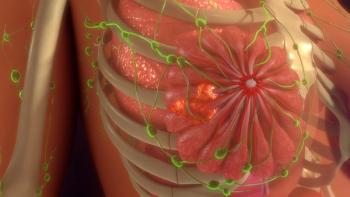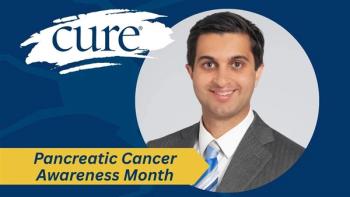
Practical Suggestions for Every Woman Facing a Mastectomy
What do you do? What should you know? Here are some practical pieces of advice from someone who
Hearing the words, “You have breast cancer,” are frightening, and those four words can bring on a vast array of emotions, but hearing you need a mastectomy conjures up palpable fears as you come to the realization that you’re about to lose a body part.
When I was diagnosed with breast cancer, I’d only heard the word mastectomy once or twice before. I was unfamiliar with the medical procedure, other than understanding it meant a breast would be removed. After my oncologist referred me to the breast surgeon, I gained a better understanding. She drew detailed sketches and as she diagramed the procedure for me, she allowed me to ask questions. Although her information was very helpful, going through a mastectomy was quite a difficult experience for me. My hopes, in writing this post, are to give some practical hints and tips to women who might be facing the removal of one or more breasts in the very near future.
Before your mastectomy:
- If you have time, buy Dr. Susan Love’s Breast Book. It’s a wonderful book filled with helpful information on everything aspect of breast cancer. If you don’t have time for a long read, Breast Cancer for Dummies might help you. It’s also filled with lots of good information in a quick and easy-to-read format.
- Purchase some very soft night gowns. You’ll want to have gowns that are easy to put on, too. Those that button down the front are best.
- Purchase some gel ice packs. Gel packs are flexible and are easy to tuck underarms or lay against your chest wall.
- Have some extra pillows on hand. You’ll need to prop up the arm on the affected side of your body and you’ll have to sleep on your back for a while until you’ve healed.
- The hospital will provide an elastic compression garment for you to wear immediately after surgery. Ask for an extra one, that way you can wash one while wearing the other.
- Some hospitals and breast care centers offer small heart-shaped pillows for free. These pillows are wonderful for placing underneath your arms. You’ll want to enlist the help of a seamstress friend if you don’t have access to these freebies. They’re not complicated to make. Here’s a YouTube video with complete instructions. Another site that offers a free pattern can be found here.
- Take time to process your upcoming procedure. Talk about it with your spouse or significant other. Make a list of any questions you might have and talk to your doctor about them. No question is too insignificant.
- Take instant pictures, (like Polaroids) or make a plaster casting mold of your breast(s). Plaster casting kits can be found in stores that specialize in baby items or online through companies like the Keep a Breast organization. Learn more here. Do whatever you choose to remember your breasts in a special way and don’t be ashamed that you want to keep a tangible reminder. This is a part of you. You deserve to hold on to the memory of what once was.
- Look in the mirror with nothing on from the waist up. Allow yourself time to mourn, get angry or process whatever emotion(s) you need to process.
After your mastectomy:
- Immediately after surgery, you’re going to be sore to some degree. Not all will experience extreme pain but there will be some discomfort. Ask your doctor about medication if you need it. Most of the time, over the counter medications will do the trick.
- Your doctor will limit the amount of weight you can lift, pay particular attention to this and don’t ignore the advice you receive. You’ll regret it if you do!
- More than likely, you’ll have one or more drains inserted into your chest where your breast(s) one resided. These drains are to remove excess blood and other fluids from your body. The doctor will give you very detailed instructions on stripping the drains each day (This is a process where the patient takes the drain between finger and thumb and gently pinches and slides the fingers along the tubing at the same time). No matter how hard you try to follow these instructions carefully, you may develop a seroma. A seroma is collection of fluid that builds up under the surface of your skin. If you develop one of these, you’ll need to see the doctor to have it surgically drained. It is a very quick and easy procedure and can usually be done right in the doctor’s office. You might also see some blood clots as you strip the drains. This is normal after surgery but your doctor will tell you more about this and what to do if anything abnormal occurs.
- Wear the compression bandage or top religiously right after your surgery and until the doctor tells you otherwise. This compression is vital to your healing. Once you’ve moved past the initial healing phase, the doctor will prescribe a compression type mastectomy bra with lightweight polyester fiberfill breast forms. When you’ve graduated from this, you’ll move on to a mastectomy bra with silicone breast forms unless you’ve decided on reconstruction surgery.
- Your scars will be tender for a while and anything that rubs against them will irritate your skin. Lambswool or other soft cloth can be used to cushion the skin against abrasive materials.
- You will have difficulty raising your arms above your head for several weeks or months. Ask someone to help with your clothing or if you’re unable to have help, choose button or zip front clothing.
- Do the exercises your breast surgeon recommends! These will help prevent cording, a hardening and tightening of the skin along the chest wall. Some of the exercises will seem silly, but believe me, they are well worth doing. If you develop cording, it often requires seeing a physical therapist to help loosen the tissues.
- Don’t be afraid to talk to other women who’ve had mastectomies. They can be a wonderful resource. There are many online breast cancer groups and each of those allow members to ask questions with no prejudice.
- Remember, your breast(s) are being removed because the doctor feels this is the best option for your particular case. It’s OK to feel sad about the loss of your body part. Support groups are available through your hospital or a local breast care center. Feeling “less than” after a mastectomy is normal too, but remember, your breast doesn’t make you who you are! You are more than a part of your anatomy. Focus on your many wonderful qualities.
- After your surgery is over, celebrate the fact that cancer has been removed from your body! You are still alive and there is much to rejoice over.
A mastectomy isn’t something anyone would choose to go through, but thankfully, the procedure has evolved greatly over the past years. Scars are much smaller and breast surgeons are cognizant of their patients’ desires to have a pleasing outcome. Your mastectomy surgery will greatly depend on whether you’ve decided to have reconstructive surgery or if you’ve decided against it. Either way, your doctor will do the very best to give you a good result.
There’s a whole army of women who’ve already faced this procedure. More than likely, you’ve been in the presence of some of them without ever suspecting they might not have two real breasts, but who really needs to know? It’s always going to be a private matter unless you tell your story. May your experience be a good one and hopefully, some of these tips will prove helpful to you.





